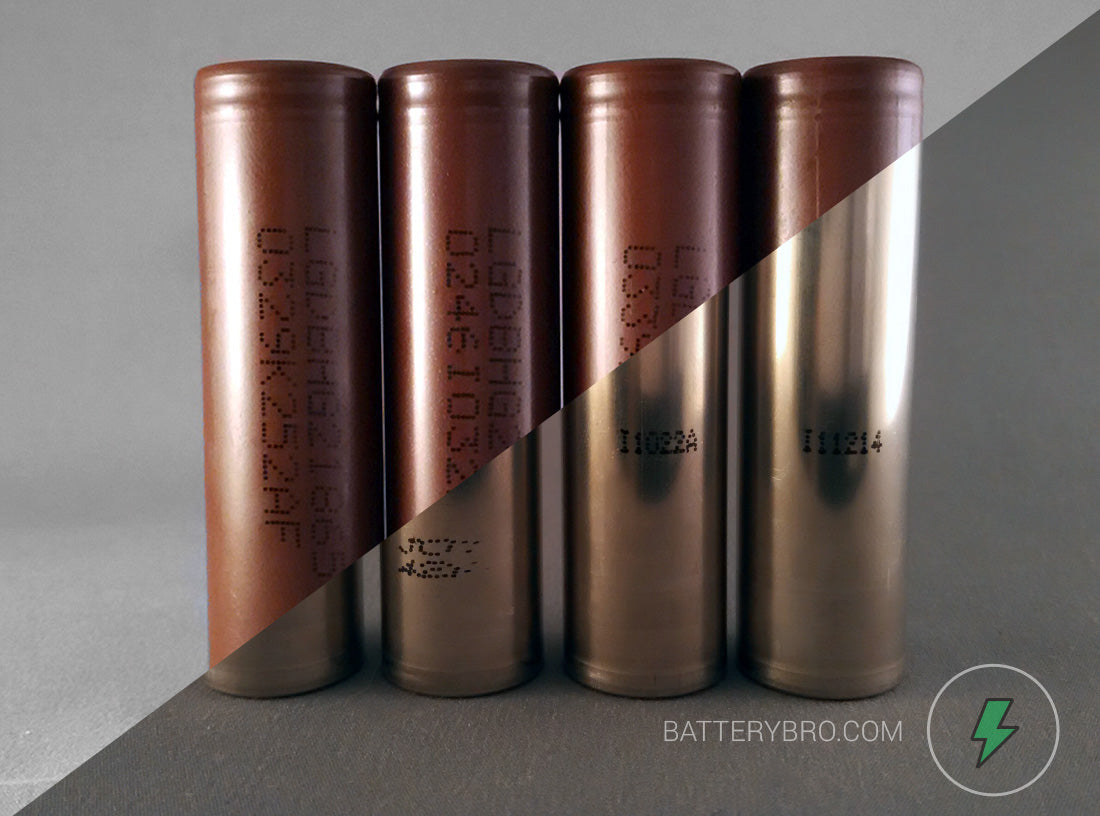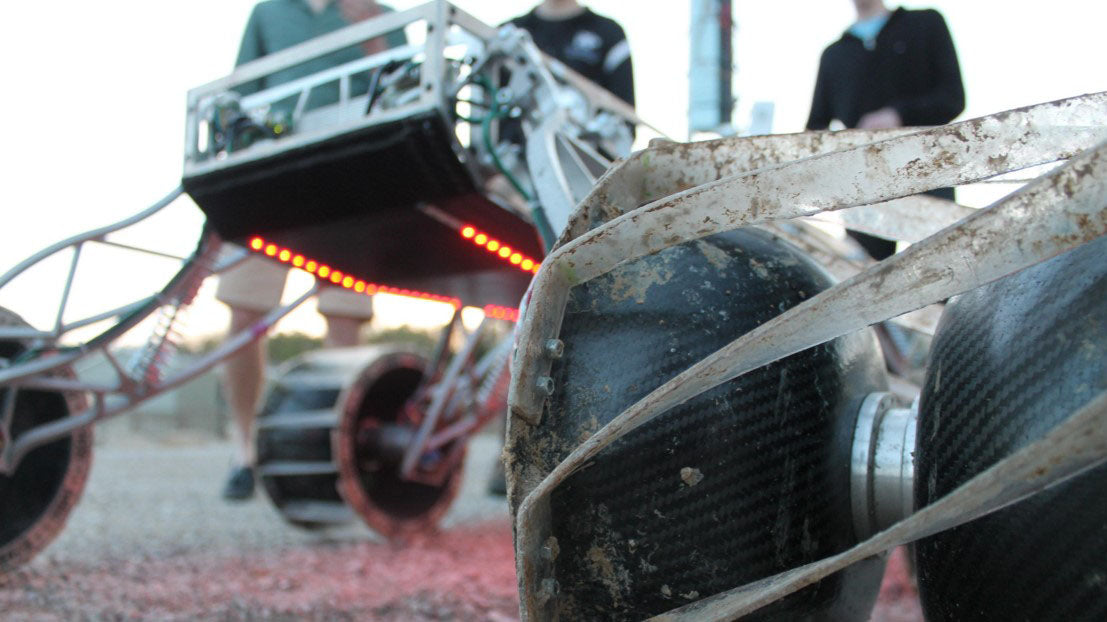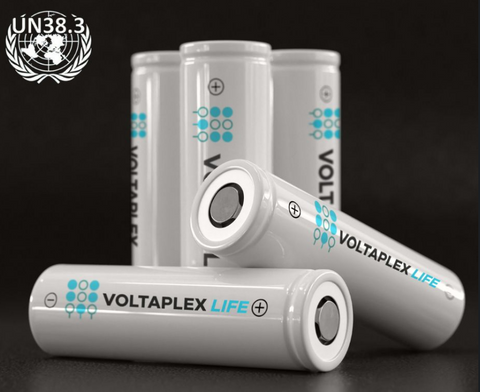The marine battery and the LiFePO4 battery chemistry June 05 2015, 1 Comment

SolarPlanet, the first solar-powered boat to circumnavigate the world.
In this blog post I look at 18650 batteries for electric boats, and take a closer look at the safe LiFePo4 battery chemistry which is gaining popularity for 18650 marine batteries.
The two kinds of marine batteries
There are two distinct uses for marine batteries:
- Used to start the main engine of the craft.
- Used specifically to power trolling motors.
The word ‘troll’ actually means to go round and round in repetition. The trolling motor is simply a system with an electric motor, propeller, and controls.
In fishing, trolling is when your cast one or more fishing lines with bait or lures. Often this is achieved by drawing the lines from behind a moving boat. This is not the same thing as trawling, which is using a net instead of lines. Open water fisherman often use trolling to catch big fish like kingfish.
A “trolling” motor is used to catch these game fish as a secondary means of propulsion to the main engine. Main engines don’t often operate as efficiently or quietly, or might need the extra help.
A trolling motor can also be used:
- To precisely move the boat, for example an angler casting his bait where the fish are.
- As the main engine and source of propulsion for small craft like canoes and kayaks.
- As the main engine in areas of special environmental sensitivity where gasoline engines are prohibited.
Trolling motor batteries have traditionally been lead acid. But lithium-ion for electric motors is becoming more popular and there are several reasons why.
The Safest LiFePo4 Battery Pack
LiFePO4 is a lithium-ion battery chemistry (particularly it makes up the cathode). LiFePO4 (lithium iron phosphate) is often acronymized down into three characters like other battery chemistries - in this case LFP (lithium ferrophosphate).
Google Trends

Google trends of popularity of "LiFePO4" search term. It looks like this battery has been popular since 2010, when PlanetSolar finished its circumnavigation; and the battery type has kept its popularity at the same level ever since.
Compared to lead-acid:
|
Chemistry |
Voltage |
Energy Density |
Working Temp. |
Cycle Life |
|
LiFePO4 |
3.2 V |
> 120 wh/kg |
-20 - 60 °C |
2000 |
|
Lead acid |
2.0 V |
> 35 wh/kg |
-20 - 40°C |
250 |
LFP is a naturally occurring mineral that is rich in iron. Its unique characteristics give the cathode a great thermal and chemical stability and make a safe battery. The drawback being that capacity is limited because lithium ions have a hard time moving through this material. As such, LFP particles are often coated in a conductive materials like carbon and have a lower capacity such as 1200mAh for a LFP 18650 (The LiFePO4 battery has also been made into a AA size "14500" that have a capacity of 600 mAh.). The anode is graphite or carbon as in most other 18650 batteries.
Lithium-ion is most notable for its exceptional and continually improving energy density. It is this reason that lithium-ion marine batteries are gaining in popularity above others.
LFP chemistry is particularly favorable because it has:
- The safest lithium-ion chemistry (no risk of fire, explosion).
- A very long cycle life (2000+ charge/discharge cycles).
Other advantages of the LiFePO4 battery chemistry:
- Very uniform discharge voltage of 3.2 volts. The 18650 LiFePO4 battery maintains a steady 3.2 volts until the cell is depleted. This means less regulation circuitry and more efficient use of the cell’s total capacity.
- A series of four match well with six-cell lead acid batteries and thus is an easier transition.
- Less environmental concern, compared with lead acid.
When a battery is overcharged, this excess energy has only one way out - it is converted to heat. Think about heat as the path of least resistance for the chain-reaction powering the lithium ions. The cell structure can no longer handle the load and play in the system it wants to, and volts can not be increased further. The energy only has one choice after the battery system breaks down, and that is to convert into heat. This is true of all batteries, and the LFP chemistry is no different. If they are overcharged enough, or mishandled in other ways (like being pierced by a nail) they still have the ability to heat up enough to ignite, smoke, or explode.
The bottom-line is the LFP chemistry is very stable, and does not react exactly like other lithium-ion cells. Heat generation is bad, but fire and explosions as an outcome is what everyone really wants to avoid. A fire is chemically a very specific process, where some substance combines with oxygen from the air. In LiFePO4 batteries, the bond is strong between the Fe (Iron), P(Phosphorus), and O(Oxygen) called the FE-P-O bond. This makes it much more difficult for oxygen atoms to be removed and cause an exothermic reaction.
LiFePO is not the same as Li-Po or Li-Poly
The ‘Po’ at the end and ‘Li’ at the beginning creates a lot of confusion when distinguishing between these two battery types.
As you know, LiFePO is a chemistry. Li-po on the other hand stands for lithium polymer batteries. The polymer part refers to a soft, flexible material. Li-poly batteries are soft-pack lithium-ion batteries, like the ones found in drones, and mobile phones.
The LiFePO4 battery chemistry often finds its way into cylindrical 18650 batteries - with a hard steel case. They are then put together into a lithium pack with a BMS (Battery management system).
Li-poly is a term that only refers to the battery’s shape - a flexible polymer shell. A li-poly battery may be made out of a number of different battery chemistries.
A short history of electric boats
Electric boats are a thing of the past, really. The first electric boat powered by batteries was in 1882. It was a seven meter long electric boat called the Electricity. Batteries were under passenger seats to maximize space for passengers. The boat ferried people around the River Thames and was very comfortable and accommodating. It could run for six hours at eight miles per hour.
They were not only quaint. There were some beasts in the water too. In the 1893 Chicago World Fair, electric boats carried over a million passengers. Luxury vessels could reach 70 feet long.
But by the 1920's the internal combustion engine started gaining dominance. Ship and boat engines had matured enough to harness the efficient use of combustion - which is still much more energy dense than batteries (kerosene has ten times the energy density of lithium ion). In 1920, William Oxford & Sons (the second largest shipyard in the UK) stopped making steam-powered ships and switched exclusively to Diesel engine. It was also the time Diesel powered engines were really commercialized, costs brought down substantially, and the first diesel car introduced.
Electric boats seem to have been forgotten except in some special cases. Most recently, solar power and lithium-ion batteries are giving them another chance.
Sail-boats can theoretically coast forever, circumnavigating the globe with wind alone. Solar boats have this potential too, which is very desirable for boating people. Sail-boats are at the mercy of the winds, while sunshine and energy storage in batteries have much more flexibility and less margin of error. Energy density will eventually decrease so that boats never have to stop running. Imagine giant shipping container boats that will not have to refuel. The largest shipping boats in the world produce more CO2 than all automobiles combined so there is also a dire environmental element to battery technology.
The biggest and best solar powered boat

The Turanor PlanetSolar was the first boat to circumnavigate the world using only solar power and storage batteries in 2010. It has since been refitted as a commercial vessel, ferrying people around. It is all-in-all a good project. The founder stretched the limits of technology with this project, had a great adventure, and has turned it into something of a commercial success so it may live long,
Specs:
- 35-meters long by 23 meters wide
- 6-person crew
- 100% dependant on solar-power
- Rear-flap can be angled to catch sunlight better
- Atlantic crossing took: 71 days
- Pacific crossing took: 134 days
- Total time to circumnavigate the globe: 584 days
- Broke its own record for a solar-powered Atlantic crossing in only 22 days
They fitted the ship with scientific equipment to measure and record currents, aerosols, and other natural phenomenon. One benefit of solar vessels is for research, where scientists do not want to disturb their environment with oil and gas.

These two partially-submerged hulls contain all of the lithium-ion batteries and the two electric motors. (Photo credit: Verge)

The crew can access the li-ion batteries from this waterproof encasement. (Photo credit: Verge)
The ship uses a 1.2 MWh battery with about 800 lithium-ion cells, each rated at a capacity of 500Ah. The total weight of the cells is a whopping 8.5 tons*. The cells were totally custom-built, by a company whose website no longer exists so it is difficult to find out their exact specifications (particularly their chemistry). Their use on PlanetSolar proves the usefulness of lithium-ion as an energy storage solution for vessels that use electric propulsion.
*Keep in mind the hull is built out of very light materials and the total weight of the ship is about 100 tons. That makes the marine batteries 8.5% the total weight of the ship.

A great view of the solar panels on-board this boat.
The top of the boat is fitted with around 130 photo-voltaic modules that cover about 500 square meters of the ship’s sun-facing surface.
Solar Powered Ferries
Electric ferries have much more practicality than long-range “best of burden” ships. A ferry usually has calm waters and land very close-by. If it is too cloudy, the ferry can likely use the power-grid to charge while on either side of the route. Ferries on fresh-water bodies do not need to protect against corrosion, or a list of other hazards on the ocean - and thus can use cheaper batteries.
The Solar Shuttle is one such service in Europe, where there are a handful. This one connects Germany, Switzerland and Austria. It has the capacity to carry up to 60 passengers and obtains its energy, like you guessed, from solar cells on the roof. It has batteries under the passenger seats which carry energy if the day becomes cloudy. Keep in mind, this is almost the same design as the original Electricity from 1882 but looks much nicer.
Take a look at some of these pictures. The design is really nice and organic and is good to symbolize the environmental friendliness of the craft and the motifs behind their inception.
Photo Credit: Ippolito Fleitz Group



Lithium-ion batteries for competition boats
In many competitions, players are trying to get lighter. Energy density is the way to do that, and so for boat racing and boat tournaments the LiFePO4 battery is well suited. For example in bass master tournaments it can be critical to shed a few pounds of weight off your boat so you are able to get to the prime locations first.
Other uses for the LiFePO4 battery
This post was a small overview for LiFePO4 marine batteries. But there are other uses for this battery chemistry.
Solar power is particularly price sensitive and it takes a long time to repay investments in the field. The life-cycle of batteries is very important. Having to replace the batteries because their cycle life is too short can add years to a payback period that might already take 15 years. So a lithium-ion with a long cycle-life actually also translates to the li-ion battery with lowest overall cost, making LFP is very desirable for solar battery packs.
LiFePO4 batteries for electric vehicles are abundant. Electric cars, motorcycles, electric gold caddies, electric skateboards, and more all use lithium-ion (LiFePO4) batteries.
Lithium-ion batteries for laptops
LiFePO4 batteries for laptops are also employed, most notably in the One Laptop per Child project. They use LFP batteries because they contain no toxic heavy materials (to comply with EU restrictions). The batteries are used in Gaza and the West Bank for community projects and in schools.
Other uses include:
- Home energy storage
- RC cars
- Security lights









Comments
Tony Long on August 13 2015 at 10:32PM
Hi all!
My name is Tony Long, I am a housewife. I had a terrible problem with my Trolling Motor Battery, thank for share this article. It is helpful for me, see the same at: http://batteryreviews.net/best-marine-battery/